Moles
Understanding and Monitoring Moles
What is a Mole?
A mole is one of the most common growths on the skin and can occur anywhere on the body. While most moles are benign, it is important to monitor any changes in a mole or the appearance of a new mole, as these can sometimes indicate underlying health issues.
Importance of Monitoring Moles
It is always a good idea to keep an eye on any changes in size, shape, color, or texture of a mole and to bring these changes to the attention of a trusted dermatologist. Early detection of irregularities can be crucial in preventing more serious conditions, such as skin cancer.
Expert Care at the Center for Surgical Dermatology & Dermatology Associates in Westerville, OH
The dermatologists and skin experts at the Center for Surgical Dermatology & Dermatology Associates specialize in the examination and treatment of moles. They carefully assess any signs of irregularity or changes during your skin check.Our experts provide comprehensive care and offer guidance on sun protection to prevent new moles from developing. Schedule today.
Examples of Moles
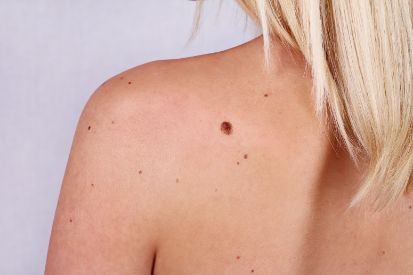
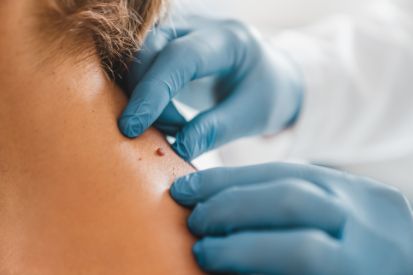
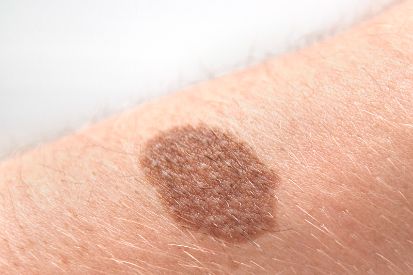
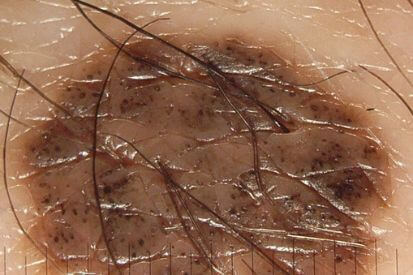
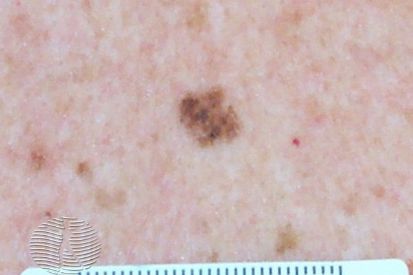
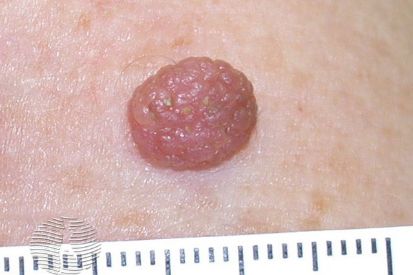
What are the Symptoms of Moles?
- Moles can be either raised or flat.
- The surface of the mole can be smooth or wrinkled and some may contain hair.
- Though generally brown or flesh-colored, moles may also appear tan, black, red or blue.
- As the body ages, moles may lighten in color, flat moles may become raised, and some moles may disappear.
Causes of Moles
- Genetics (Family History): Our genetic code significantly influences mole development.
- Sun Exposure: Spending time under the sun contributes to the appearance of moles.
- Hormonal Changes: Life events like pregnancy, marked by hormonal fluctuations, can influence the number of moles.
- Age: As we age, our skin accumulates more moles.
How to Prevent Moles
- Sun Protection: Shielding your skin from excessive sun exposure is crucial. Make sunscreen with at least SPF 30 a daily habit, even on cloudy days. Wear protective clothing, like hats and long sleeves, and seek shade during peak sunlight hours.
- Avoid Tanning Beds: Artificial tanning methods, such as tanning beds, can contribute to the development of moles. Opt for sunless tanning lotions or sprays as a safer alternative if you desire a sun-kissed glow.
- Regular Skin Checks: Keep an eye on your skin and monitor any changes in moles. If you notice alterations in size, shape, or color, or if new moles appear, consult one of our trusted skincare specialists promptly. Early detection can be crucial in preventing potential issues.
- Avoid Hormonal Fluctuations: While some hormonal changes are natural and inevitable, minimizing exposure to unnecessary hormonal fluctuations, such as those caused by certain medications, can be beneficial.
Moles FAQs
Keep an eye on moles for changes in size, shape, color, or if they become itchy or bleed. If you notice any changes, it's essential to have them checked by a dermatologist. Regular self-checks are crucial for early detection.
While most moles are harmless, changes in appearance can be a sign of skin cancer, such as melanoma. Regular skin checks by a dermatologist help catch any concerning changes early when treatment is most effective.
Sun protection is crucial for moles. Use sunscreen, wear protective clothing, and seek shade to prevent sun damage. Moles are sensitive to UV rays, and sun safety helps maintain their health.
Not necessarily. It's common to develop new moles, especially in childhood and adolescence. However, if you notice rapid changes or have concerns, it's best to consult with a dermatologist for peace of mind.
From our QualDerm Family of Brands: Total Body Skin Exams Explained
How to Treat Moles
Our team of dermatology providers can assess the mole's characteristics, considering factors such as size, shape, and color, to determine the most suitable course of action. Professional evaluation is especially vital when dealing with moles that exhibit irregularities or changes over time. Therefore, if you notice any changes in your moles or have specific cosmetic or discomfort-related concerns, consulting your dermatologist is a proactive step toward gaining healthy skin.
Related Blog Posts

- Skin Cancer
- Skin Exams
It’s time to face the facts: skin cancer can develop in individuals of all skin colors, including those with darker skin tones.
Read More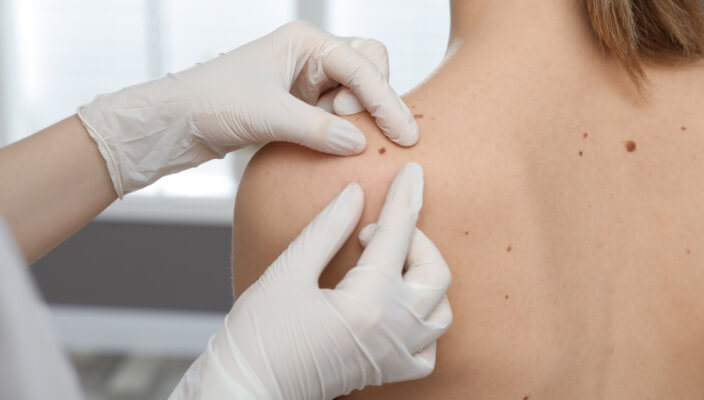
- Skin Cancer
- General Dermatology
- Skin Exams
Navigating the landscape of Total Body Skin Exams: Uncover the comprehensive process, understand why it matters for skin health, and gain insights into what to expect during these essential dermatological examinations.
Read More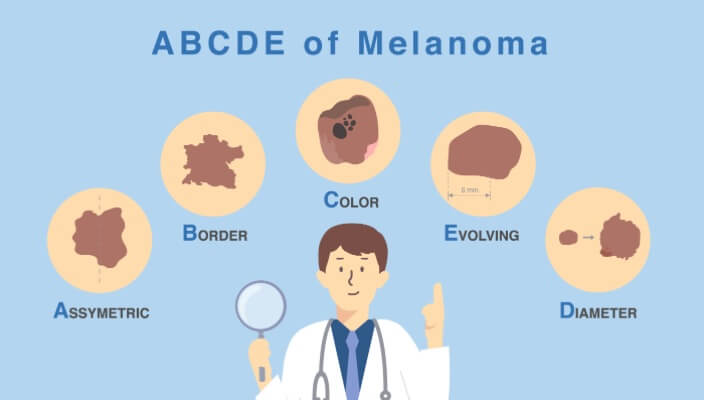
- Skin Cancer
- General Dermatology
- Skin Exams
Learn the ABCDEs of Melanoma, the deadliest form of skin cancer.
Read MoreFeatured Products for Sun Protection
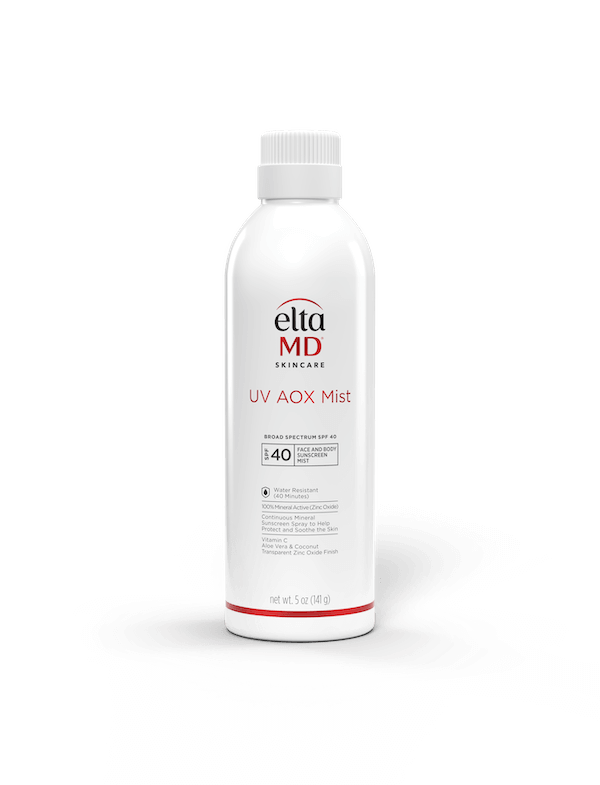
EltaMD UV AOX MIST SPF 40
UV AOX Mist is a sheer-finish, 100% mineral sunscreen spray that’s enriched with antioxidants to prevent premature aging and rejuvenate skin. 100% Mineral Sunscreen Spray for Face & Body | Enriched with Antioxidants, Air-Powered Spray Technology. 5 OZ
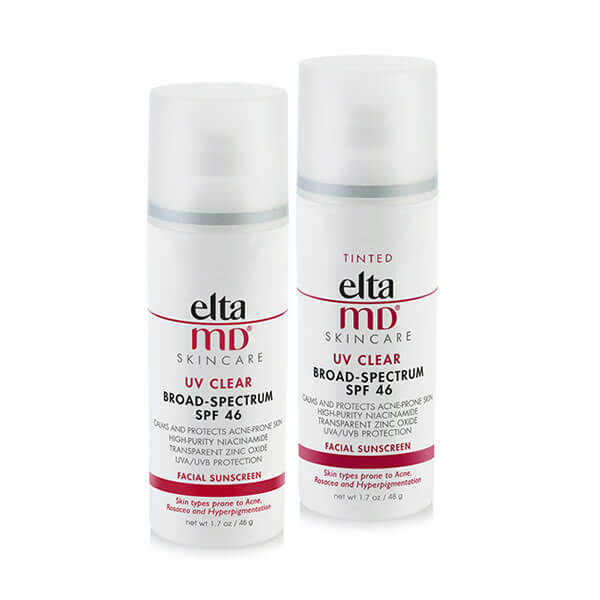
EltaMD UV Clear SPF 46
Oil-free EltaMD UV Clear helps calm and protect sensitive skin types prone to discoloration and breakouts associated to acne and rosacea. It contains niacinamide (vitamin B3), hyaluronic acid and lactic acid, ingredients that promote the appearance of healthy-looking skin. Very lightweight and silky, it may be worn with makeup or alone. Choose from tinted and untinted formulas for use every day. 1.7 oz / 48 g
